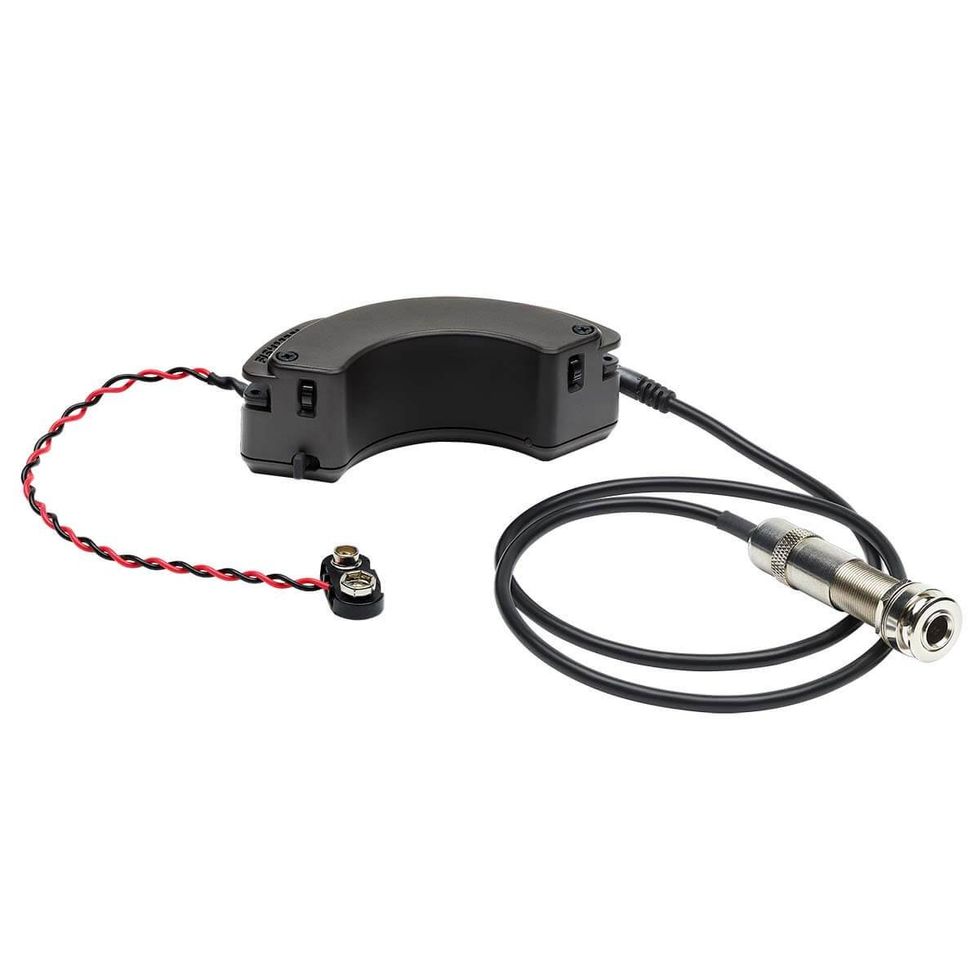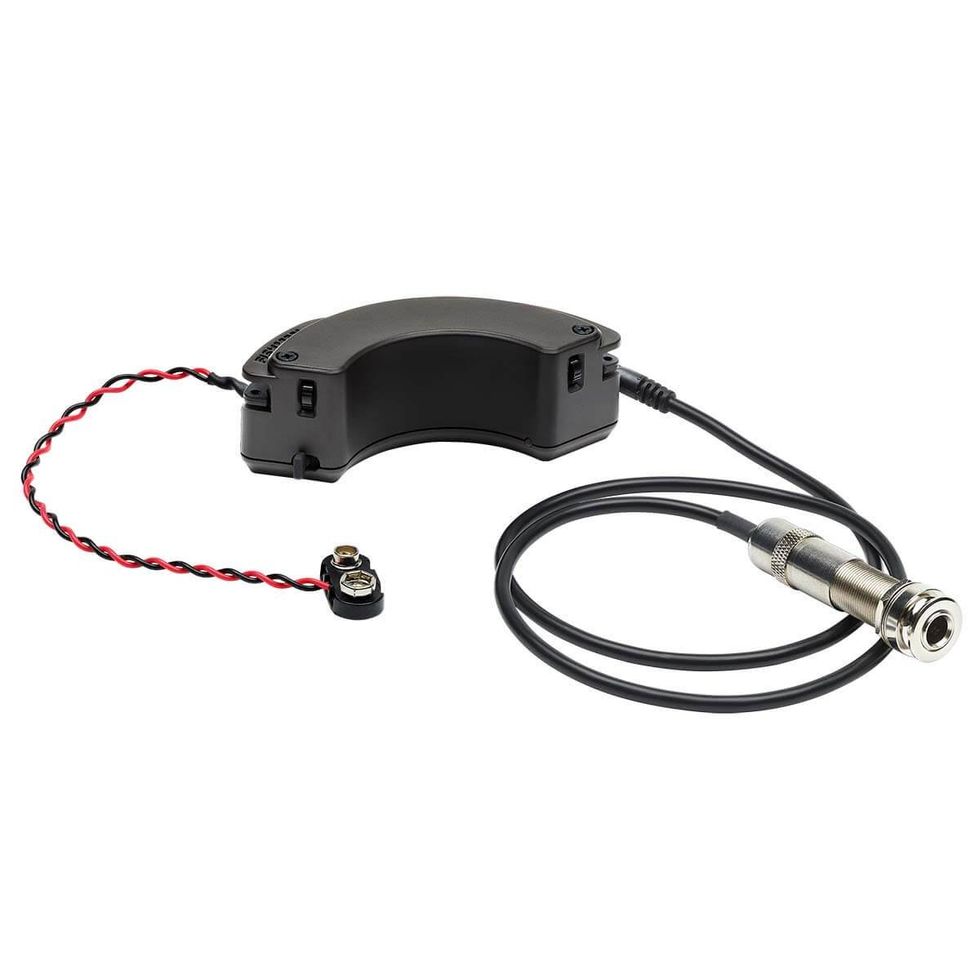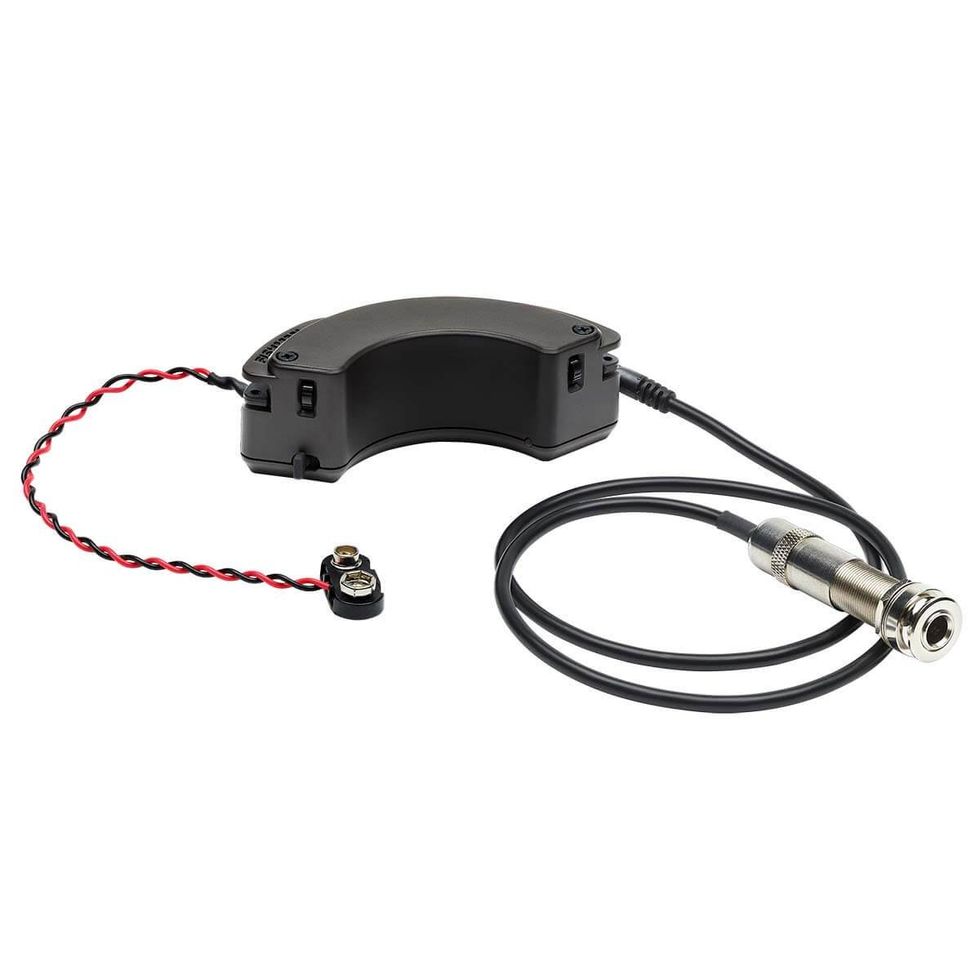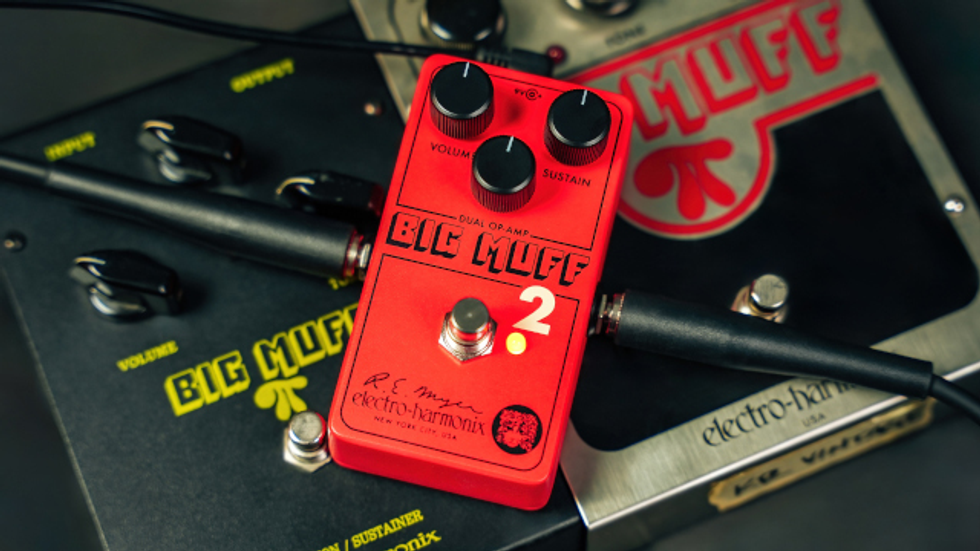If there’s one thing you learn in the business of recording, it’s the importance of having an open mind and a diverse skill set. Engineer and producer Kevin Churko is a perfect example of that. A drummer at heart, the Canadian-born multiple Juno Award winner has a credit list that runs the gamut from Shania Twain and Ringo Starr to Five Finger Death Punch and Ozzy Osbourne. I recently caught up with him to talk about mics, working with Mutt Lange, and some of the best ways to get guitar tones on tape.
Do you have a preferred chain for guitar recording?
Yes, but it’s not very sexy. With recording, the simpler the better—always. That’s not necessarily the case in mixing, though, because sometimes you have to get pretty complicated. But as far as recording signals and guitars, it’s so easy to get a great guitar tone at home now with the gear that’s available. It takes a $100 Shure SM57 and maybe some other mics, like a Sennheiser 421. You do want a good preamp, though. I’ll use a Neve pre or even something like a Focusrite ISA 428. They sound great and are not that much money.
The other thing is that I don’t put a lot on guitars, especially rock guitars. They already have so much going into and coming out that it will alter their tone too much.
So no compression?
I don’t use any compression. If a guy’s already going through a cab and has tons of gain going, you can’t really compress anything like that unless you’re doing it multiband, but I find it generally gets in the way. It only works with a great player. With someone like Zakk Wylde, you don’t want to record him and make him sound like someone else. He can probably play any rig and sound like Zakk, but by the time he comes in and sets up his amp, literally all I have to do is put a 57 in front and it sounds great. He makes it easy on me.
Do you use plug-ins on the guitar chain?
On both the Black Rain album with Zakk and the new Ozzy album with Gus G on guitars, the only plug-in was just a Sonnox EQ. I didn’t have to use too much of it, either. Maybe some dipping at 3K and some boost at 8K if it was a Marshall. I’d also take some off the bottom. I tend to get as much done on the way in as I can. But even when I’m working with someone like Zakk, my methodology is to do as little to screw it up as I possibly can. Just try to get the most you can from the amp.
Of course, I’ve found that with the better players—the guys that already have a handle on their sound—I don’t have to do a lot. Place the mic right, go through a good preamp, and it’s done.
What about acoustic guitars?
That’s a little different. On the new Ozzy album, Gus actually played an acoustic intro to a song. I used a lot of room sound, in addition to a Neumann M49 as the close mic. A little further back, I had a couple of Cole 4038s. Most of the sound I used was from the stereo mic setup, which was just a very simple X/Y pattern—but that gave it width. In this case, it was just the guitar, so it could be very wide, very fat, and it didn’t really have to poke through anything in the mix. So, I used a combination of those three mics, with just a small bit of compression, again doing as little as possible. The Coles were going through two GML preamps and SSL X-Rack EQ and compression. The M49 was going through a Neve 1076 pre and a Universal Audio LA-2A compressor.
Do you record room sounds on electrics?
If it’s sort of an organic clean sound, I’ll want some more room tone and I will probably use stereo mics and put them a little further back. But if it’s a typical rock or metal guitar, I’ve tried everything from using six mics and mic’ing the back of the cab and the room, but by the time I get to the mix I’ve gone back to the 57.
You worked with Mutt Lange in Switzerland for years. What did you pick up working with him?
I think the biggest thing I learned working with Mutt is relevant not only to guitar recording but to all areas of recording and production— or life, for that matter. It’s deceptively simple: There are no rules—and, of course, use your ears. We’ve all set up enough mics on guitar cabs to know what we prefer. My preference is usually that simpler is better. However, there can be magic to setting up eight mics and blending them all into a single tone characterized by interesting phasing incoherencies. Many great tones and sounds have been created by mistake, or by folks who don’t necessarily know what they’re doing. It’s important to study and understand our art, but it’s more important not to become a slave to it. It’s all about the end result.
I’ve been lucky to work with an extreme variety of artists with completely different ideas of good and bad. There is no right or wrong, just differences. And one should embrace them all. Is an amp always better? Can a plug-in or box work instead of the amp? Should the plug-in be fed back to the amp? A purist can only refine what has already been accomplished in the past. An audio outlaw can redefine and shape the future.
Rich Tozzoli
Rich is a producer, engineer and mixer who has worked with artists ranging from Al DiMeola to David Bowie. A lifelong guitarist, he’s also the auther of Pro Tools Surround Sound Mixing and composes for such networks as Discovery Channel, Nickelodeon and National Geographic.
Do you have a preferred chain for guitar recording?
Yes, but it’s not very sexy. With recording, the simpler the better—always. That’s not necessarily the case in mixing, though, because sometimes you have to get pretty complicated. But as far as recording signals and guitars, it’s so easy to get a great guitar tone at home now with the gear that’s available. It takes a $100 Shure SM57 and maybe some other mics, like a Sennheiser 421. You do want a good preamp, though. I’ll use a Neve pre or even something like a Focusrite ISA 428. They sound great and are not that much money.
The other thing is that I don’t put a lot on guitars, especially rock guitars. They already have so much going into and coming out that it will alter their tone too much.
So no compression?
I don’t use any compression. If a guy’s already going through a cab and has tons of gain going, you can’t really compress anything like that unless you’re doing it multiband, but I find it generally gets in the way. It only works with a great player. With someone like Zakk Wylde, you don’t want to record him and make him sound like someone else. He can probably play any rig and sound like Zakk, but by the time he comes in and sets up his amp, literally all I have to do is put a 57 in front and it sounds great. He makes it easy on me.
Do you use plug-ins on the guitar chain?
On both the Black Rain album with Zakk and the new Ozzy album with Gus G on guitars, the only plug-in was just a Sonnox EQ. I didn’t have to use too much of it, either. Maybe some dipping at 3K and some boost at 8K if it was a Marshall. I’d also take some off the bottom. I tend to get as much done on the way in as I can. But even when I’m working with someone like Zakk, my methodology is to do as little to screw it up as I possibly can. Just try to get the most you can from the amp.
Of course, I’ve found that with the better players—the guys that already have a handle on their sound—I don’t have to do a lot. Place the mic right, go through a good preamp, and it’s done.
What about acoustic guitars?
That’s a little different. On the new Ozzy album, Gus actually played an acoustic intro to a song. I used a lot of room sound, in addition to a Neumann M49 as the close mic. A little further back, I had a couple of Cole 4038s. Most of the sound I used was from the stereo mic setup, which was just a very simple X/Y pattern—but that gave it width. In this case, it was just the guitar, so it could be very wide, very fat, and it didn’t really have to poke through anything in the mix. So, I used a combination of those three mics, with just a small bit of compression, again doing as little as possible. The Coles were going through two GML preamps and SSL X-Rack EQ and compression. The M49 was going through a Neve 1076 pre and a Universal Audio LA-2A compressor.
Do you record room sounds on electrics?
If it’s sort of an organic clean sound, I’ll want some more room tone and I will probably use stereo mics and put them a little further back. But if it’s a typical rock or metal guitar, I’ve tried everything from using six mics and mic’ing the back of the cab and the room, but by the time I get to the mix I’ve gone back to the 57.
You worked with Mutt Lange in Switzerland for years. What did you pick up working with him?
I think the biggest thing I learned working with Mutt is relevant not only to guitar recording but to all areas of recording and production— or life, for that matter. It’s deceptively simple: There are no rules—and, of course, use your ears. We’ve all set up enough mics on guitar cabs to know what we prefer. My preference is usually that simpler is better. However, there can be magic to setting up eight mics and blending them all into a single tone characterized by interesting phasing incoherencies. Many great tones and sounds have been created by mistake, or by folks who don’t necessarily know what they’re doing. It’s important to study and understand our art, but it’s more important not to become a slave to it. It’s all about the end result.
I’ve been lucky to work with an extreme variety of artists with completely different ideas of good and bad. There is no right or wrong, just differences. And one should embrace them all. Is an amp always better? Can a plug-in or box work instead of the amp? Should the plug-in be fed back to the amp? A purist can only refine what has already been accomplished in the past. An audio outlaw can redefine and shape the future.
Rich Tozzoli
Rich is a producer, engineer and mixer who has worked with artists ranging from Al DiMeola to David Bowie. A lifelong guitarist, he’s also the auther of Pro Tools Surround Sound Mixing and composes for such networks as Discovery Channel, Nickelodeon and National Geographic.









![Rig Rundown: Russian Circles’ Mike Sullivan [2025]](https://www.premierguitar.com/media-library/youtube.jpg?id=62303631&width=1245&height=700&quality=70&coordinates=0%2C0%2C0%2C0)















